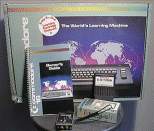Navigátorposledních 10 z diskuze |
Commodore 264 Series 
Commodore C16 / C116
There has been much speculation as to the reason Commodore released these machines. They lack compatibility with the C64, an immensely popular machine. They lack the sound and video capabilities of the C64. They *do* have a faster processor and a larger color pallette, and the Plus/4 has built-in software, but this was not quite enough.
Now, the Commodore 16, shown above, was meant to be a replacement for the VIC-20, which had been discontinued a few months before. Compared to the VIC, it is indeed an impressive upgrade. 16K to the VICs 3.5K, better video graphics, and full compatibility with VIC peripherals. As mentioned above, however, consumers at this time were not looking to make such a small step when so many other great machines were available. Commodore tried to market the C16 as an educational computer. This marketing ploy was not successful however. Perhaps because there is only so much you can learn from a 16k breadbox that pales before its peers.
Statistics, features, and C16/C116 resources:
Personal Note: The Commodore 16 came from an eBay auction, while the C116 came from a German computer shop. The 116's keyboard is extremely hard to type on, making it my least favorite "tinkering" machine. However, I also have a 116 with 64k of memory, which was perfect for a little PAL "demo" viewing spree I went on shortly after receiving it. 
|
Poslední recenzereakce na článkyTOP 10 HRY
|